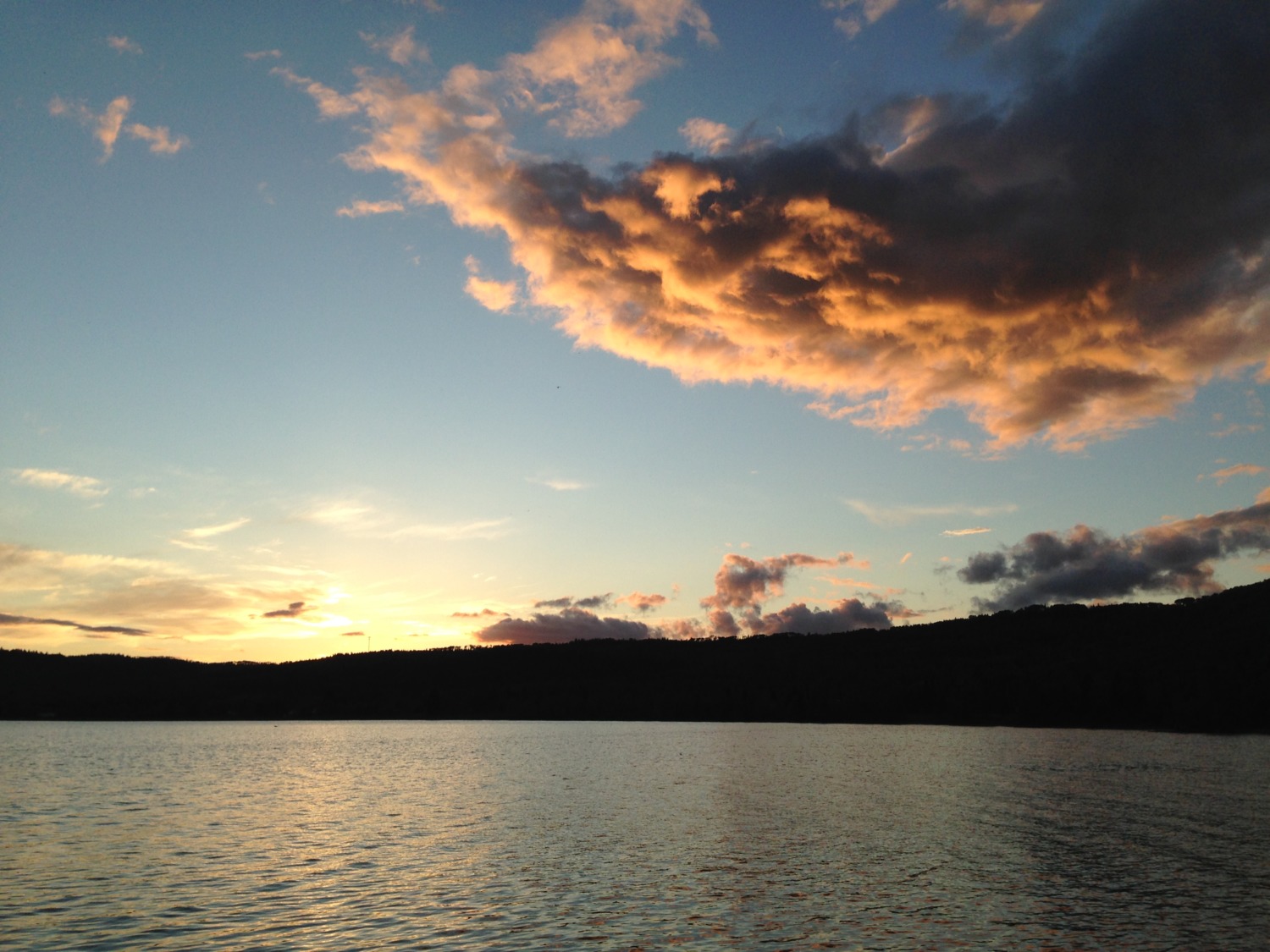
Longfellow’s epic poem, “Song of Hiawatha,” contains these lines:
On the shores of Gitche Gumee,
Of the shining Big-Sea-Water,
Stood Nokomis, the old woman,
Pointing with her finger westward,
O’er the water pointing westward,
To the purple clouds of sunset.
Fiercely the red sun descending
Burned his way along the heavens,
Set the sky on fire behind him,
As war-parties, when retreating,
Burn the prairies on their war-trail;
We are now living on the shores of Lake Superior (Gitche Gumee) and many nights we are treated to spectacular “purple clouds of sunset” with “the red sun descending.” Of course, the pictures never live up to experiencing the sunset in person. I have already spent many evenings down on the dock gazing at the sky (slathered in DEET of course – everything has its price).
We were surprised with our first sunset at our current location. We did not expect the sun to set directly behind us over the lake. But we are on the north shore of the lake and we are also on a peninsula sticking out into the lake. So when we look out the big picture window of the RV, we are facing west. And the sunsets are spectacular.
“The Song of Hiawatha” was written by Henry Wadsworth Longfellow in 1855. It is an epic poem with 22 chapters. Most of us have only read a small piece of it, although we might be able to give a synopsis of the tragic love story of Hiawatha and Minnehaha. It is based on Ojibwe legends told to Longfellow by Ojibwe Chief Kahgegagahbowh during his visits in Longfellow’s home. Hiawatha travels in a birchbark canoe, a traditional Ojibwe mode of transportation.
In the final chapter of “The Song of Hiawatha” Hiawatha climbs into his birchbark canoe and disappears into the sunset on Gitche Gumee. As Tom and I enjoy the beautiful sunsets here, we understand.
